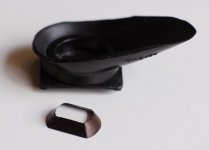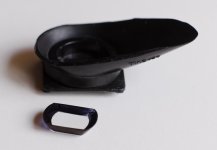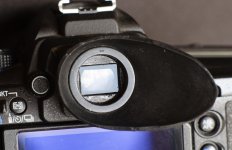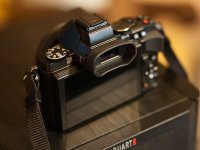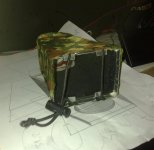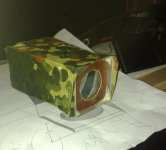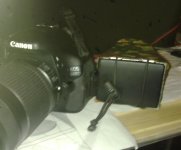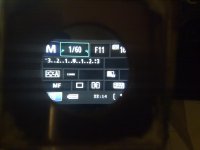JGobeil
Nature Photographer
I decided to start this thread realizing I'm not the only one having eyesight problems. Maybe we can help each other.
I developed eyesight problems with age and, what makes it worse in my mind, is that my eyesight used to be better than 20/20 (no kidding).
Age (going on 70 now...) and diabetes force me to wear glasses for close focusing, up to about 5 meters. I wear progressive focus glasses and this works quite well in regular daily use - manual focus photography is another story.
Focusing using the LCD with my glasses works fine but is not an option for birding because the LCD gets washed out by the strong light. Unfortunately, we need strong light with those high f/ scopes at high shutter speeds.
Using the viewfinder with glasses works ok using auto focus: I can see and change the settings, compose and take the shot on a clear focused image. Unfortunately, the progressive glasses bring in an insidious problem: they allow me to adjust my eyesight to get clear focus in the viewfinder on objects that are NOT QUITE in focus BUT CLOSE. This is done instinctly without even realizing it. The result is that I cannot rely on glasses to focus accurately using the viewfinder - the focus looks good in the viewfinder but the results are not that great when viewing the photos on the computer.
I can use the viewfinder without glasses, adjusting the diopter adjustment dial to get a clear image on a properly auto-focused image with the 100-300mm lens on the OM-D. Unfortunately, this does not really work that well for manual focus... I discussed this recently with an ophtalmologist and he explained that my eyesight changes according to fatigue, the time of day, light levels and my blood sugar content. Granted, it does not change much but it seems to be enough to prevent accurate and reliable manual focusing.
I tried using a focus chip on the Canon 50D but it worked sporadically and was not accurate. Maybe I should try it with the OM-D ? I also tried Focus Peaking but it is poorly implemented on the OM-D and the results were so-so.
Writing this makes me realize that maybe I should calibrate the viewfinder more often - before each birding session and when the light changes. Quite a hassle...
As you can see, you are not the only ones...
Please contribute with comments and suggestions. Add your experience if you also have eyesight problems. That way we can help each other and maybe find solutions.
I developed eyesight problems with age and, what makes it worse in my mind, is that my eyesight used to be better than 20/20 (no kidding).
Age (going on 70 now...) and diabetes force me to wear glasses for close focusing, up to about 5 meters. I wear progressive focus glasses and this works quite well in regular daily use - manual focus photography is another story.
Focusing using the LCD with my glasses works fine but is not an option for birding because the LCD gets washed out by the strong light. Unfortunately, we need strong light with those high f/ scopes at high shutter speeds.
Using the viewfinder with glasses works ok using auto focus: I can see and change the settings, compose and take the shot on a clear focused image. Unfortunately, the progressive glasses bring in an insidious problem: they allow me to adjust my eyesight to get clear focus in the viewfinder on objects that are NOT QUITE in focus BUT CLOSE. This is done instinctly without even realizing it. The result is that I cannot rely on glasses to focus accurately using the viewfinder - the focus looks good in the viewfinder but the results are not that great when viewing the photos on the computer.
I can use the viewfinder without glasses, adjusting the diopter adjustment dial to get a clear image on a properly auto-focused image with the 100-300mm lens on the OM-D. Unfortunately, this does not really work that well for manual focus... I discussed this recently with an ophtalmologist and he explained that my eyesight changes according to fatigue, the time of day, light levels and my blood sugar content. Granted, it does not change much but it seems to be enough to prevent accurate and reliable manual focusing.
I tried using a focus chip on the Canon 50D but it worked sporadically and was not accurate. Maybe I should try it with the OM-D ? I also tried Focus Peaking but it is poorly implemented on the OM-D and the results were so-so.
Writing this makes me realize that maybe I should calibrate the viewfinder more often - before each birding session and when the light changes. Quite a hassle...
As you can see, you are not the only ones...
Please contribute with comments and suggestions. Add your experience if you also have eyesight problems. That way we can help each other and maybe find solutions.




